TSOTA x TRS Studio Visits is a collaboration between The State of the Arts and The Royal Standard. TRS is a an artist-led gallery, studio and social workspace in Liverpool, working with over 40 artists. Every month we will be presenting interviews and studio visits with artists working in the space and chatting to them about their process, tools and the meaning of art-making. After a little break, we’re back to our regular chats, and this month we talked to Georgemma Hunt.
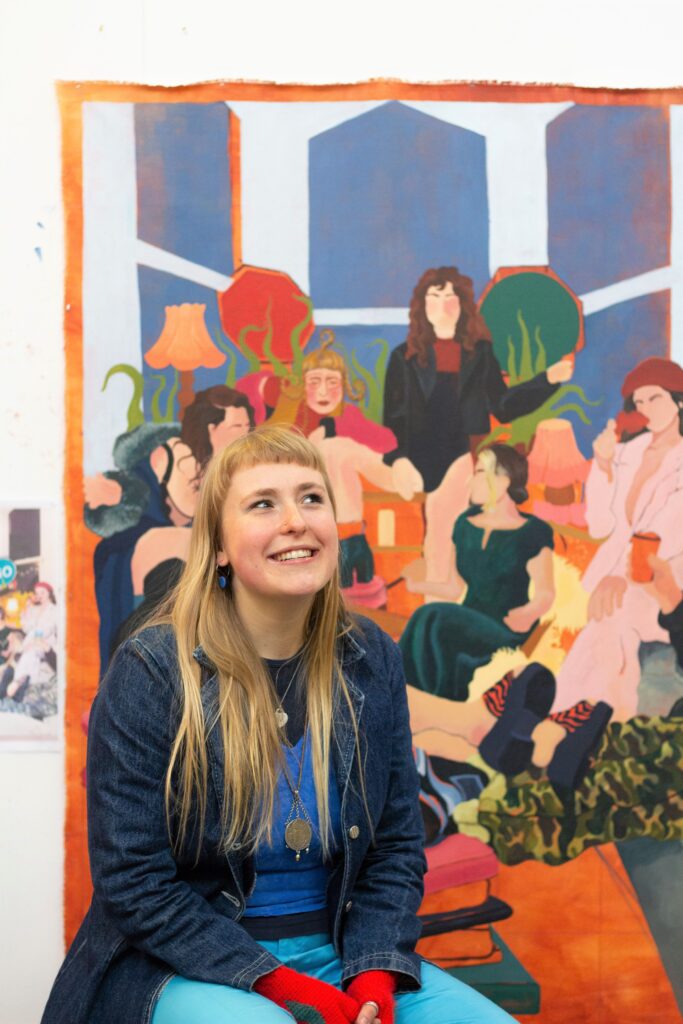
Photo: Daniel O’Dempsey
To start off, could you just tell me a little bit about your work in general?
I’m currently training to be an architect, but I spend nearly all of my spare time making art! I work primarily with acrylic on unstretched canvas, but my work also spans murals, drawing, graphic design and, later this month, I’ll be taking my first plunge into sculpture!
I’ve been honing my art practice ever since I completed my undergraduate architecture degree in 2018. But, with a reduced social life due to the pandemic, I’m now dedicating more of my time to art than ever before.
My work is joyful and sheds a positive light on modern life and reflects my own sense of fun. People have told me that they’re immediately able to recognise my works as my own. I’m not sure whether that’s a good or a bad thing, but I’d definitely say that I’m still exploring techniques and developing my style, although it could be described as graphic, highly saturated and a little dream-like.
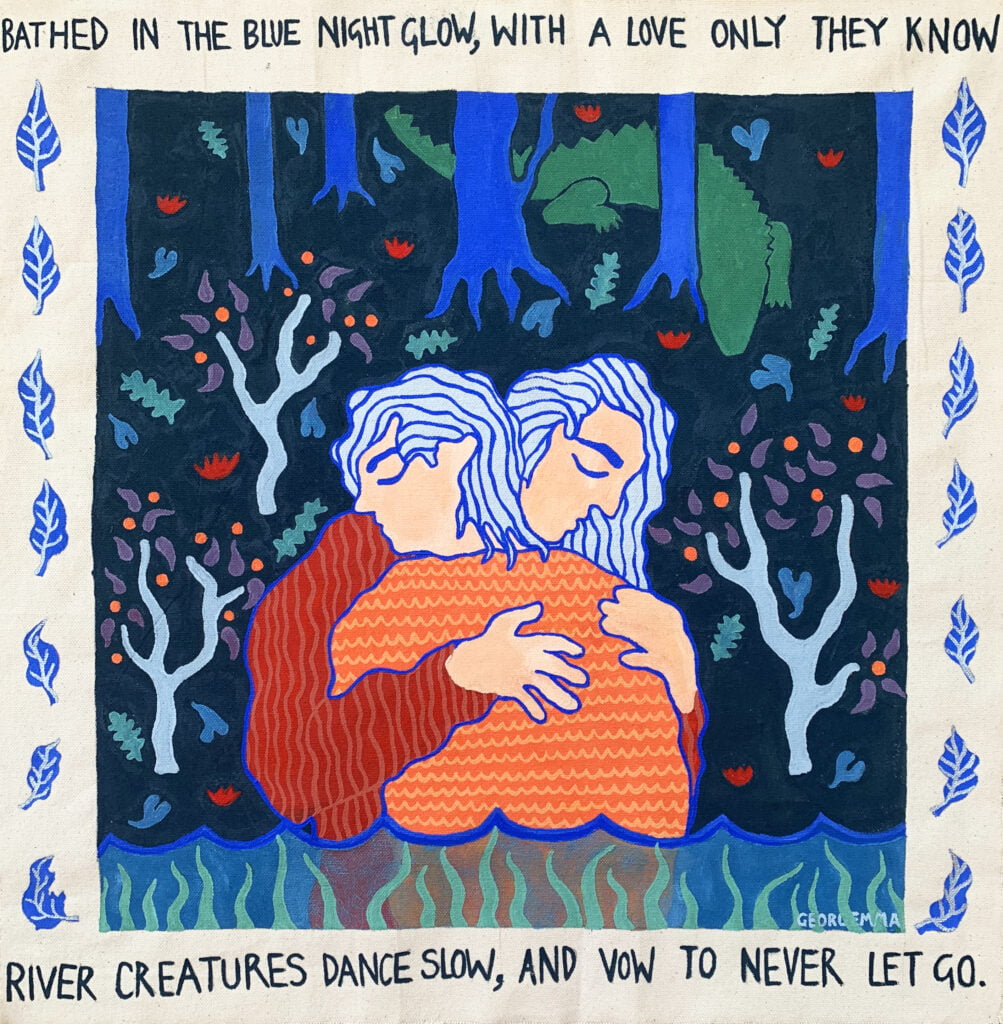
‘River creatures’ (acrylic on unstretched canvas, 2020, 30 x 30 cm)
I didn’t go to art school, so instead I treat every day as an informal means of gaining an art education and often that manifests itself in fleeting conversations with artists at TRS, or in public. I’m always searching for new references and I regularly go on solo, exploratory walks through Liverpool, or elsewhere. When on these walks, I photograph and/or sketch moments of interest, whether that’s an unusual shadow or an ordinary object in a peculiar place, or indeed anything else that catches my eye. I’ll often refer back to these notes and sketches when I’m searching for inspiration in my work.
Hockney said “If you see the world as beautiful, thrilling and mysterious, as I think I do, then you feel quite alive”, and I really believe I do. Sometimes I surprise even myself, with just how much happiness and inspiration I can draw from the most mundane scene. I’ve often thought that I don’t have any urge to experience hallucinogens, because I’m not sure how much more beautiful the world could get for me!
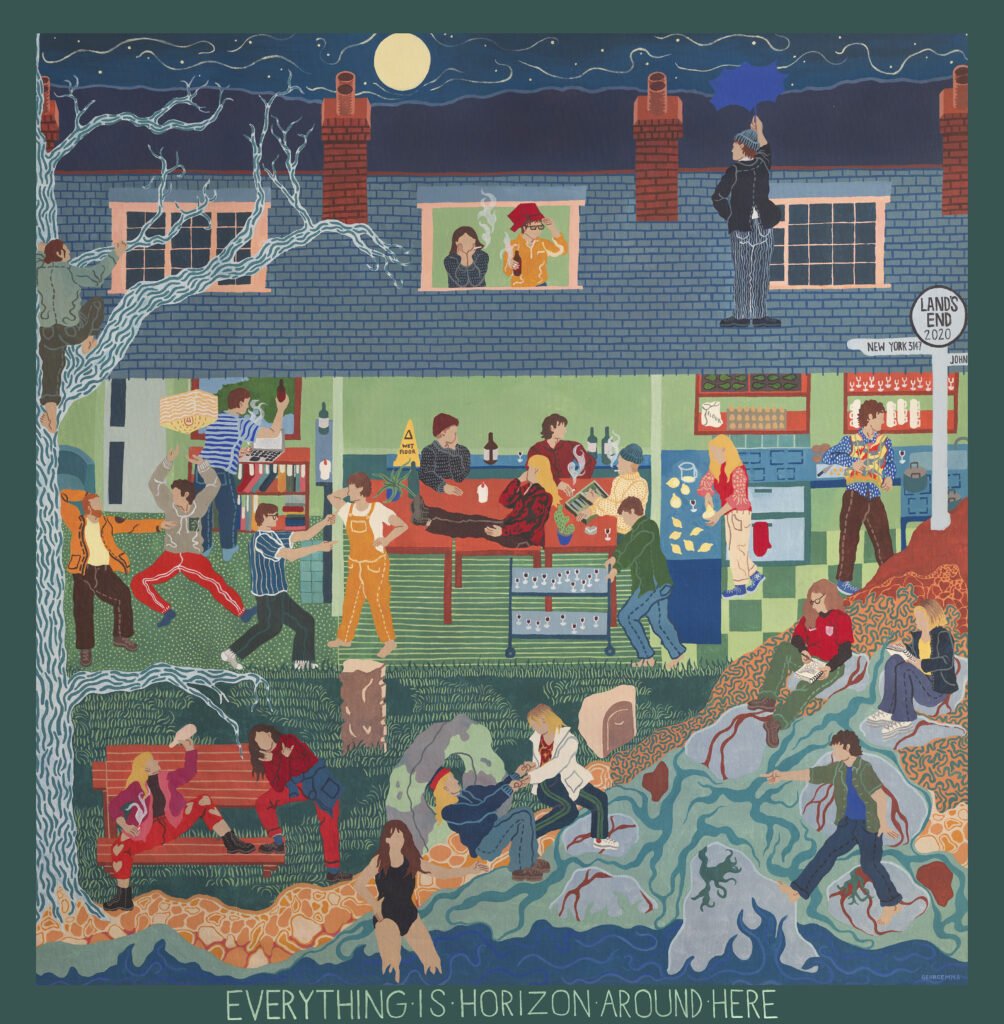
‘Everything Is horizon around here’ (acrylic on unstretched canvas, 2020, 151 x 151 cm)
In reading about your work, I learned that you were trying to find a way to avoid having to compromise when choosing between art and architecture, which you’ve trained in. How have you managed to achieve this and pursue them both without having to make a choice between one or the other?
So, that remains a pretty sticky question that I continue to face on a daily basis. Last August, I changed my architecture job contract from 5 to 4 days a week, and that’s been a real blessing. I also moved into my studio at TRS around that time. Before that, I was painting in my living room late into the night on weekdays and all throughout my weekends, which meant I was overtired at work and my art was becoming a burden rather than a joy! It was pretty exhausting and fuelled a number of burnouts, which was totally counter-productive. Although I still work round-the-clock (I’m a self-diagnosed workaholic), the extra day in the studio makes a big difference and I’m learning the benefits of taking time off too.
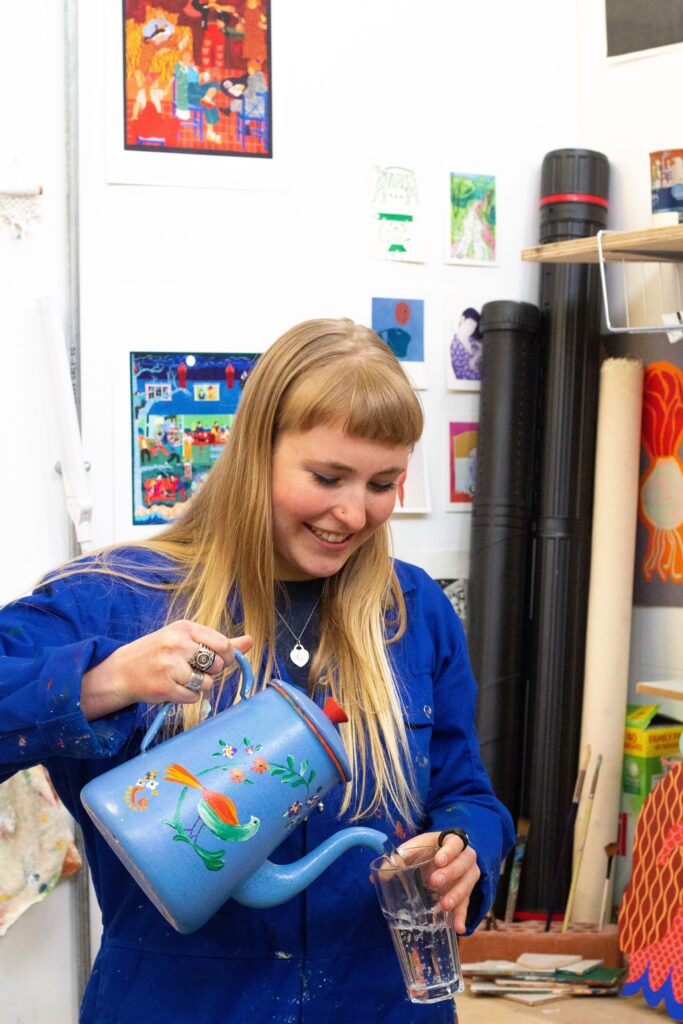
Daniel O’Dempsey
This September, I’ll be starting my Masters in Sustainable Architecture at the Centre of Alternative Technology (CAT) in Wales. One of the reasons I chose this course is because it promotes a healthier work-life balance and poses less strain on students, compared with most architecture courses that are highly competitive and pretty toxic. I hope this will afford me the time and headspace to continue creating art. Maybe I’ll find a way to integrate my art practice into my design work?!
Generally, I feel really happy with the balance I’ve got going on right now. But, sometimes I worry that I’m making compromises in both and I do get nervous about whether I’ll be able to continue juggling the two in my future. Maybe I’ll continue working both as an artist and architect alongside each other, rather like I am now, or maybe I’ll pour all my energy into one and then hit a break point and turn to the other for a break! Who knows? The uncertainty keeps me on my toes, and I try to see it as exciting!
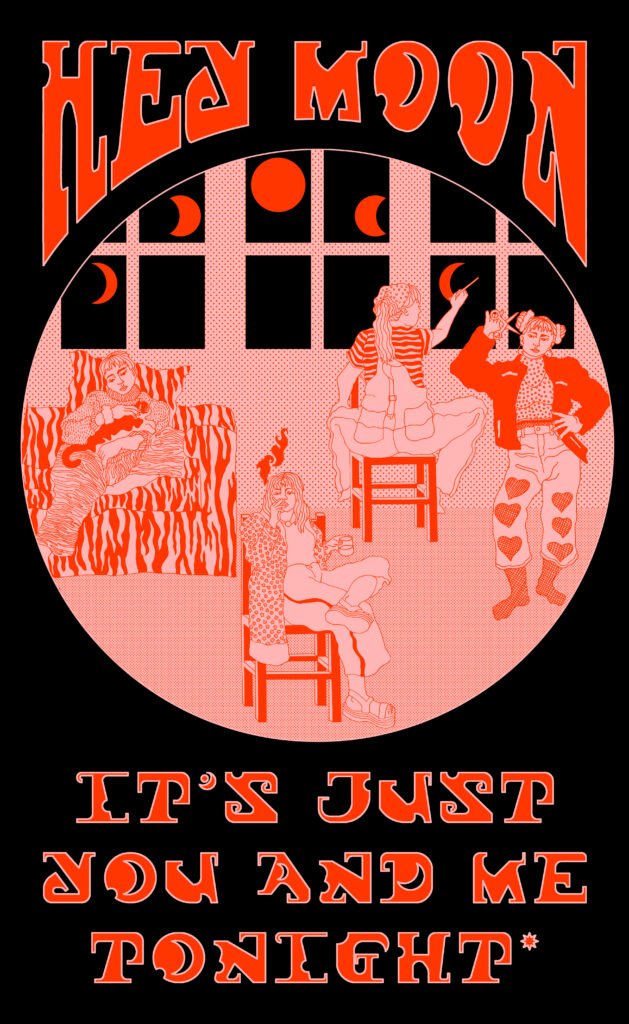
‘Hey moon’ (digital design study for a T-shirt)
Your work has a gorgeous feel-good quality and exudes a kind of happy honesty, almost a what-you-see-is-what-you-get aura. How do you construct your compositions and where do you look for inspiration?
Wow, thank you… what kind words. It’s great to hear that my paintings evoke happiness because that’s exactly what I aim for. I often say that they reflect something of my own personality and I’m a pretty happy, honest, and even silly, character so I think that must come out in the brushstrokes!
Most of my compositions are constructed from memories. When curating a scene, I refer to photos, sketches and architectural drawing methods, which I use to collage people, activities and places onto a canvas. I often start with a messy sketch that gives an overall sense of what I’m trying to capture. I’ll then pick apart the composition into its individual elements: figures, architecture, furniture, props, planting, etc. Next, I’ll sketch each of these isolated parts in a little more detail, often tracing over the lines until I’ve reached the right shapes. Then I’ll scan the drawings and layer, rescale and tweak them in Photoshop until I’ve got a rough composition that I’m happy with. This collaged drawing then forms a guide for the painting, and I’ll grid it up onto the canvas and see where the paint takes it.
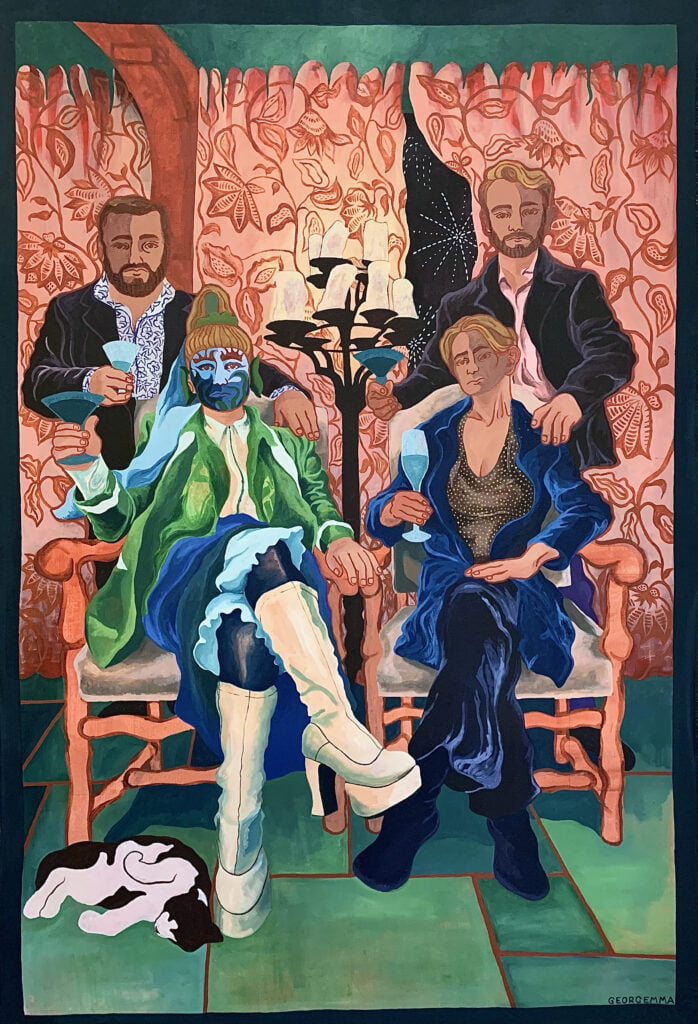
Things were a little different this year (acrylic on unstretched canvas, 2021, 115 x 171 cm)
When it comes to colour palettes, Instagram has been a great source of inspiration (as much as I hate to admit it). It’s so easy to discover emerging artists and artworks of a similar style. I also gather a lot of inspiration in the everyday, and by immersing myself in new surroundings. I walk a lot, in cities and nature, and that helps a lot too. I can draw inspiration from clothes, patterns, signage, tiles, mould… you name it!
I place a lot of importance on the painting title, which will often be inspired by a passing comment made by a friend, or a lyric that’s particularly powerful. I’m no poet, but I do enjoy playing around with words and coming up with simple rhymes that add another level of meaning to an image. In my paintings, I incorporate these words into the border in a casual, capitalised font. I also really enjoy designing themed typefaces that look something like the words sound! For example, I designed a couple of T-shirts last year with bespoke typefaces that mirrored the lunar and solar themes running through the illustrations and text. I dream about creating a whole library of wild typefaces that I could use in various applications.
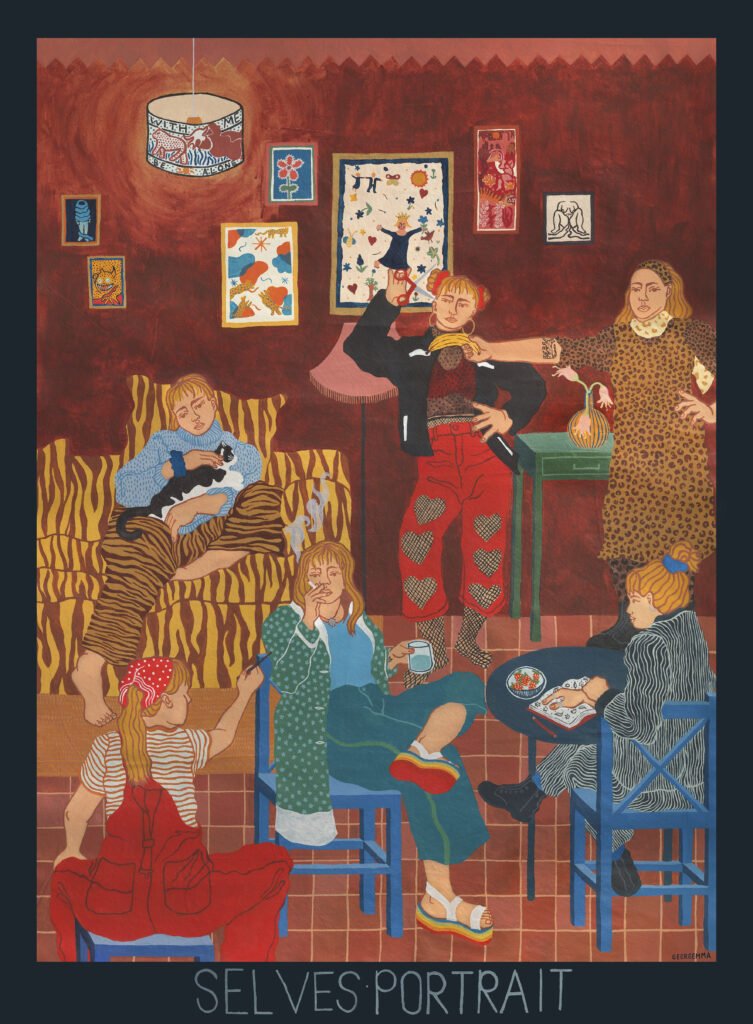
‘Selves portrait’ (acrylic on unstretched canvas, 2020, 108 x 151 cm)
Could you talk a little more about your palette? Colour seems to be a central element of your work and what gives it such happy vibrancy and freshness, I’d love to know more about how you choose the colours.
It’s so great to hear you say that. I feel like I’m constantly striving towards achieving a more sophisticated colour palette. It’s easy to underestimate just how hard it is to make colours sing… it really is a skill in itself. Whenever I come across a piece of art, a sign, or even a piece of clothing that has a great palette, then I’ll take note and refer back to it whenever I’m stuck with my own colour combinations. Sometimes I’ll eyedrop the individual colours in Photoshop and create a reference palette. This technique helps me to consider the colours alone, rather than get distracted by the rest of the image build-up.
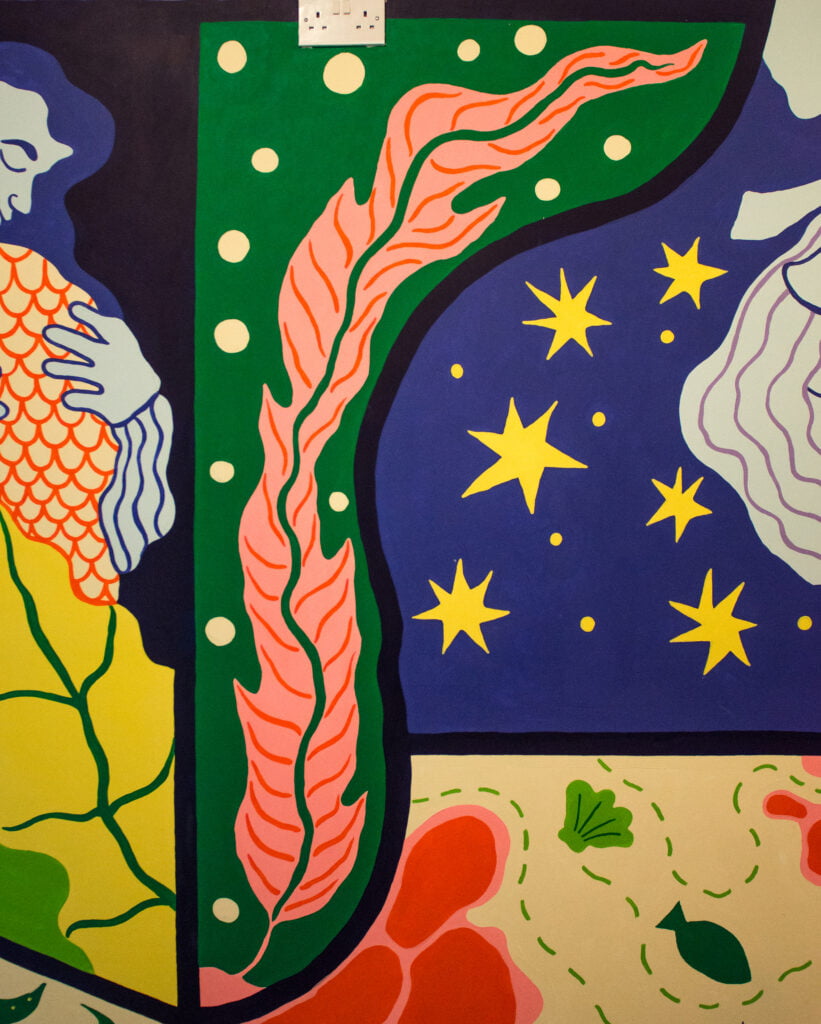
‘The world is listening’ (mural at The Open Door Centre, Birkenhead, 2021, 3.3 x 3.7 m Photo: Daniel de la Bastide
Although, I must admit, I’ve not learnt any easy trick for achieving a killer colour palette so far. I paint very impulsively and without hesitation. So, I start a painting by laying down a whole range of colours very quickly and without too much thought. I then spend time working into the different colour adjacencies so that every colour sits right in its own context. This can be a long process, and sometimes I have to repaint areas of colours up to five times before I’m happy with the result.
As for my paint colours, I mainly work with Prussian Blue, Ultramarine, Cadmium Yellow, Cadmium Red, Yellow Ochre, Burnt Umber and White and I mix all my colours using just these. Once on my palette, it’s really a case of mixing random combinations of each until I reach a colour that works. I don’t follow recipes, but instead let the paint lead me. For many, this can be a pretty wasteful way of working, because I’ll often squeeze too much of one colour out onto my palette. However, I’m infamous for being resourceful with waste (sometimes to my own detriment), so I’ll often end up staying in the studio hours later than I’d intended just so that I can use every last scrap of paint up! Worst case scenario, I throw all the wet colours into a jam jar and mix a grey/brown that I’ll use at a later date.
It’s a pretty different ball game when making digital work. I find it much harder to arrive at a sophisticated, yet vibrant colour palette when designing murals or making architecture visualisations in Photoshop. It helps to step away for a bit and ask the opinion of well-trusted friends, who can look at it with fresh eyes.
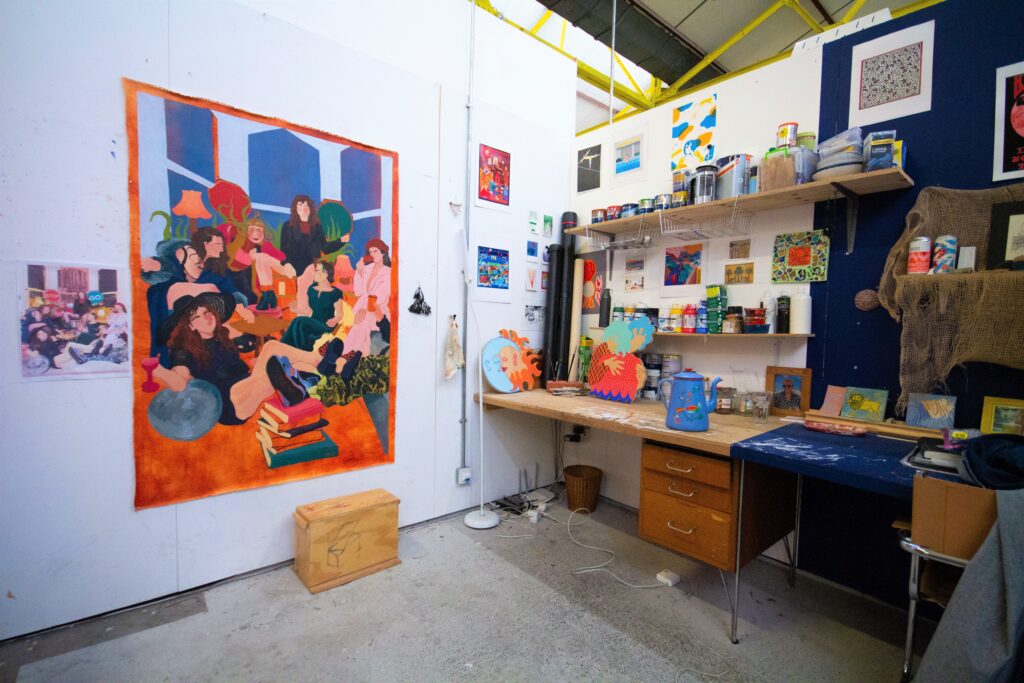
Daniel O’Dempsey
A lot of your paintings are on unstretched canvas – could you tell me what the reason for that is?
I started using this technique when I was living in Mexico City in 2018. I was using my friend’s roof as a studio, and I needed to stow and transport my paintings cheaply and easily. I bought some canvas from the local fabric store, primed it, pinned it to the wall and just started painting. Without faffing around building a frame and stretching the canvas, I could work quickly and on the move. I also never enjoyed the bounce back that you get from stretched canvas, so painting against a hard surface was a welcome change.
I really like the imperfections brought about by tearing canvas and most of my paintings are slightly oblique. I spend my entire working week creating precise technical drawings, so I see my art as a means of escapism where I can break free from the right angle!
Sadly, most of my paintings exist rolled up in tubes in my studio and I’m yet to exhibit them. When I finally do, I’m excited to develop a hanging system that uses ancient scrolls and tapestries as inspiration. There’s something immensely satisfying about free hanging banners that sway gently in the breeze; it really brings life to a finished piece.
For all these reasons, I continue to work like this and the fact that the frayed edges have become part of my design aesthetic is just a bonus! It’s funny that more people don’t work like this, it really is so much cheaper and easier, plus I’m yet to discover any drawbacks. Some people have raised concerns about the durability of the works and the potential for cracks to develop in the paint, but that’s something that I’ll just have to monitor as time goes on.
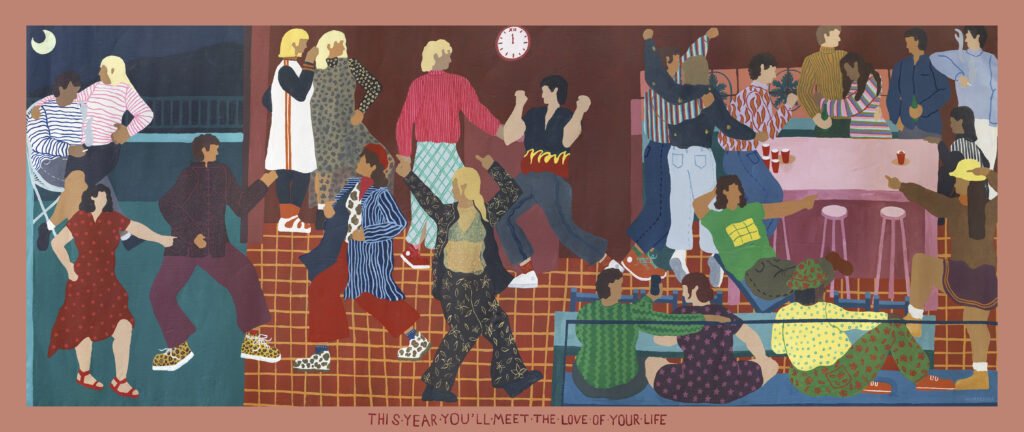
‘This year you’ll meet the love of your life’ (acrylic on unstretched canvas, 2019, 81 x 210cm)
How have you found making art for the past year? Obviously, it’s been challenging for most of us, but I’m just wondering if you created any new routines, a home studio or if your practice has changed, whether in subject matter, or size or any other way.
Well, it’s been a rollercoaster ride for sure, but I’ll focus on the positives. In some ways, the past year has been great for my art and has afforded me a lot more time to create work. I’ve found the main advantage of the pandemic has been the slower pace of life that we’ve all been forced to live, which has given me some headspace and a better sense of my priorities. I’ll definitely find it hard to adjust back to the norm, and that respite is something that I’ll miss a lot.
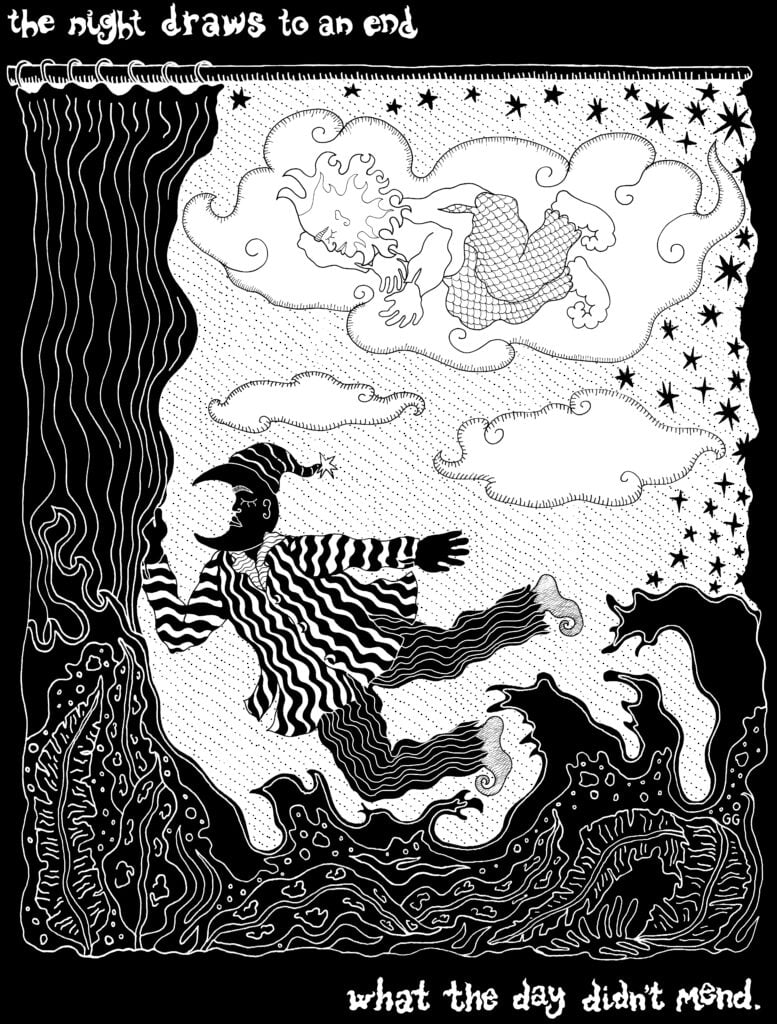
In terms of changes in my practice, I’ve experimented with some new media, including appliqué, wood carving and upcycling. These explorations have left me with lots of unfinished projects that I plan to go back to whenever I hit a block with my canvas works. As for my subject matter, I recently put out an open call on Instagram asking people to ‘dress up to stay in’ and curate photographs of their lockdown bubbles. I received over 40 incredibly unique submissions, from which I’m producing a series of up to ten large-scale portraits. Placing all curatorial freedom into the subject’s hands has brought a really fresh, new perspective into my paintings. Also, I’ve found that working from photographs has initiated a small, yet noticeable stylistic shift in my ability to capture light and texture. I’m keeping the series pretty hush for the moment, but I’m super excited to share the results later in the year.
We ask everyone this one – what’s the one tool in your studio you can’t live without?
I couldn’t narrow it down to just one, but I’d be pretty lost without tracing paper and a 0.3mm fine liner pen. I always draw in pen which doesn’t leave much room for error, so tracing paper is crucial for refining my sketches when I’m designing a painting.
Filed under: Art & Photography
Tagged with: art, artist, artwork, colour, Georgemma Hunt, happiness, inspiration, interview, mural, paint, painter, practice, Studio, The Royal Standard, visit
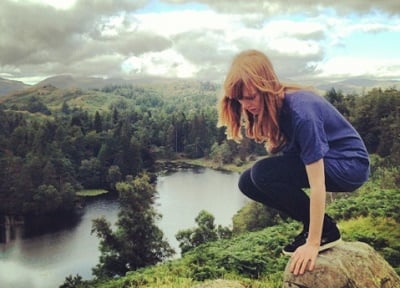

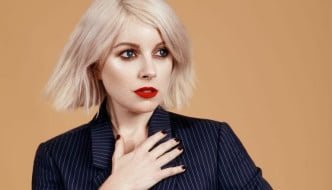
Comments